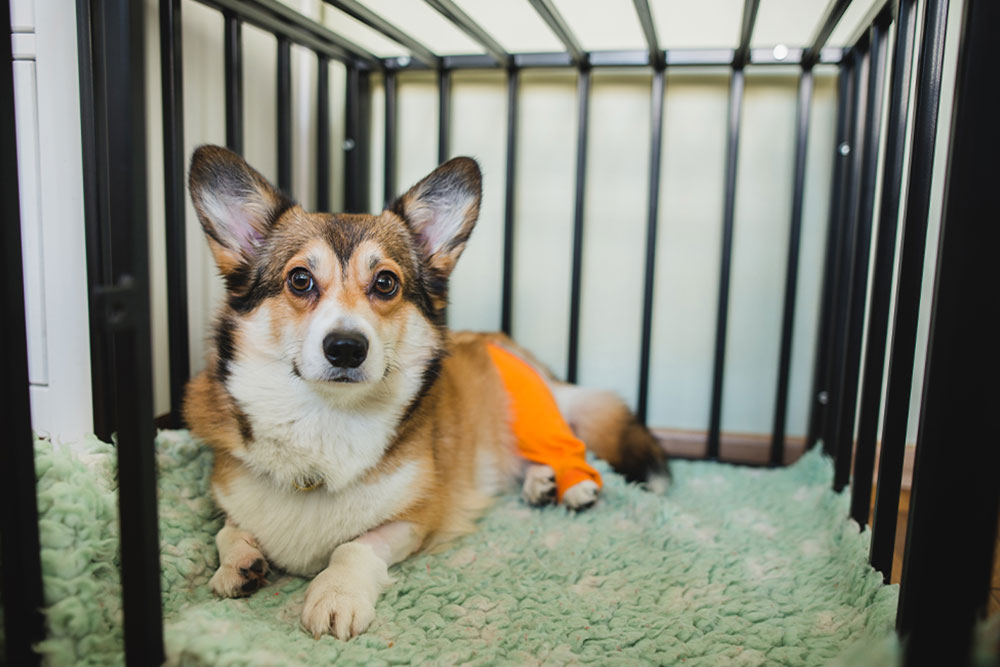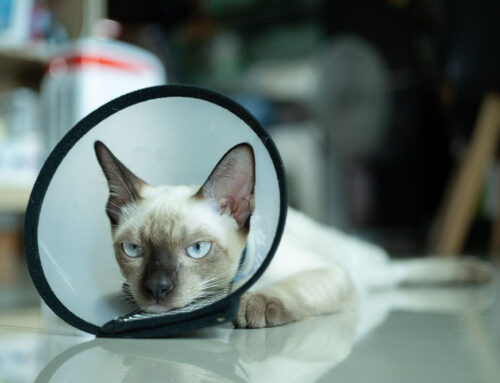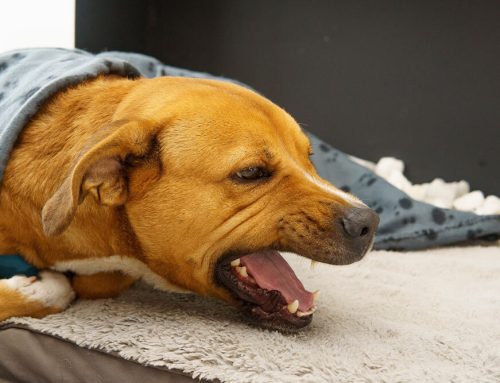Limping in Pets: Finding Answers Through Diagnostics
A dog that once loved long walks begins to slow down. A cat that usually leaps with ease now hesitates. From arthritis to injury, diagnostics reveal the true cause and guide the right treatment.
At The Animal Medical Hospital of Naples in Naples, FL, compassionate care and advanced diagnostics combine to uncover problems early and restore mobility whenever possible.
Understanding What Causes Limping in Pets
When your pet begins favoring one leg or showing reluctance to move, the underlying cause could range from a minor strain to a serious condition requiring immediate attention. Limping represents your pet’s way of protecting an injured or painful area, and recognizing the difference between various types of mobility issues helps determine the urgency of veterinary care.
Sudden vs. Gradual Limping in Pets
Sudden onset limping typically indicates acute injury or trauma, while gradual changes in gait often point to degenerative conditions developing over time. The severity of limping can fluctuate throughout the day, with many pets showing stiffness after rest periods or increased discomfort following activity. Understanding these patterns provides valuable information for your veterinarian during diagnosis.
Common Causes of Limping in Pets
Acute Injuries
Acute injuries represent one of the most frequent reasons pets develop limping. Sprains and strains commonly occur when pets make sudden movements during play, slip on smooth surfaces, or land awkwardly after jumping. These soft tissue injuries affect muscles, tendons, and ligaments, causing pain and reduced mobility that may worsen with activity.
Traumatic Injuries
More serious traumatic injuries include fractures, which can result from falls, vehicle accidents, or high-impact collisions during play. Broken bones in dogs require immediate veterinary attention, as delayed treatment can lead to improper healing and permanent mobility issues. The signs of fractures include:
- Severe limping
- Visible deformity
- Swelling
- Reluctance to bear weight on the affected limb
Bite Wounds
Bite wounds from other animals can create deep puncture injuries that become infected, leading to localized pain and limping. These wounds often appear minor on the surface but can cause significant damage to underlying tissues, making thorough veterinary evaluation essential even for seemingly small bites.
Degenerative Conditions
Age-related changes in joints frequently cause limping in older pets.
- Arthritis in dogs and cats: osteoarthritisin cats often goes unrecognized because cats naturally hide discomfort, but careful observation reveals subtle changes in jumping ability, grooming habits, and activity levels. Unlike dogs, cats rarely show obvious limping until arthritis becomes quite advanced.
- Hip dysplasiaaffects joint stability and can develop in young animals or worsen with age. This genetic condition causes abnormal hip joint formation, leading to pain, reduced range of motion, and progressive joint damage. Large breed dogs face higher risks, though hip dysplasia can occur in any size pet.
Infections and Inflammatory Conditions
Environmental hazards can create unexpected sources of limping. Foxtails, common grass seeds with barbed edges, can penetrate skin and migrate through tissues, causing intense pain and infection. These seemingly harmless plant materials require prompt removal to prevent serious complications.
Tick-borne diseases present another concern, particularly Lyme disease in dogs, which can cause shifting lameness affecting different legs at various times. The intermittent nature of Lyme disease limping often confuses pet owners, as symptoms may appear to resolve only to return in different locations.
Diagnosing the Root Cause of Limping in Pets
Accurate diagnosis requires systematic veterinary evaluation that combines physical examination with appropriate diagnostic testing. Upon arriving at our clinic for your pet’s appointment, our team will:
- Begin with a thorough history: We’ll ask about the onset, duration, and characteristics of limping, along with any recent activities or changes in your pet’s environment.
- Physical examination: Includes careful palpation of bones, joints, and soft tissues to identify areas of pain, swelling, or abnormal movement. Your veterinarian will observe your pet’s gait and assess range of motion in affected limbs, looking for subtle signs that might indicate specific conditions.
If needed, our clinic offers further testing to determine why your pet is limping:
- Advanced imaging:Provides detailed information about internal structures when physical examination alone cannot determine the cause of limping. Computed tomography (CT scans) offer excellent bone detail and can reveal fractures, joint abnormalities, or bone tumors that might not appear on standard radiographs. Magnetic Resonance Imaging (MRI imaging) excels at visualizing soft tissues, including ligaments, tendons, and cartilage, making it invaluable for diagnosing complex joint problems.
- Laboratory testing:Helps identify systemic causes of limping. Blood work can reveal infections, immune-mediated conditions like rheumatoid arthritis, or metabolic disorders affecting bone health. Joint fluid analysis becomes necessary when investigating conditions such as immune-mediated polyarthropathy, where the immune system attacks joint tissues.
Limping Treatment Options and Management
Treatment approaches vary dramatically depending on the underlying cause of limping, ranging from conservative management to complex surgical procedures. The goal remains consistent: restore comfort and function while preventing progression of the underlying condition.
Medical Interventions for Limping in Pets
Non-surgical treatments form the foundation of care for many limping conditions. Effective pain control improves quality of life and allows pets to maintain appropriate activity levels during healing. Modern pain management combines multiple approaches, including medications, physical therapy, and environmental modifications to create comprehensive comfort plans.
Mobility aids such as harnesses, ramps, and orthotic devices can significantly improve function for pets with chronic conditions. These assistive devices reduce stress on affected joints while maintaining independence and preventing secondary problems from prolonged inactivity
Surgical Interventions for Limping in Pets
Surgical intervention becomes necessary for certain conditions that cannot heal properly without mechanical correction. Hip and elbow dysplasia, fracture repairs, tumor removals, ligament repairs, and other orthopedic repairs are common for pets.
Cruciate ligament injuries in dogs typically require surgical repair to restore joint stability and prevent progressive arthritis. Various surgical techniques exist, with selection based on pet size, activity level, and specific injury characteristics.
Patellar luxation in dogs involves kneecap dislocation that can cause intermittent or constant limping. Surgical correction realigns the kneecap mechanism, preventing future dislocations and reducing associated pain.
Home Care and Prevention for Pets that Limp
Daily management strategies support veterinary treatment and can prevent some causes of limping. Warm-ups for dogs before exercise help prepare joints and muscles for activity, reducing injury risk. Similarly, gradual cooldowns after vigorous activity prevent stiffness and promote recovery
Maintaining appropriate body weight reduces stress on joints and can slow progression of degenerative conditions. Excess weight places additional strain on already compromised joints, accelerating cartilage breakdown and increasing pain levels.
Regular wellness care enables early detection of developing problems before they cause obvious limping. Routine examinations can identify subtle changes in joint health, allowing intervention before pain and mobility loss occur.

Myths and Misconceptions About Limping in Pets
Many pet owners believe limping will resolve without intervention, particularly when symptoms seem mild or intermittent. However, compensation for painful limbs often leads to secondary problems in other areas of the body. Early veterinary evaluation prevents minor issues from becoming major complications.
The misconception that only older pets develop limping conditions can delay appropriate care for young animals. Growing pains affects young, rapidly growing dogs and causes significant discomfort despite the temporary nature of the condition. Proper diagnosis and pain management improve quality of life during the growth period.
Your Next Steps for Your Pet’s Mobility
At The Animal Medical Hospital of Naples, our comprehensive diagnostic capabilities and complete veterinary services enable accurate identification of limping causes and development of effective treatment plans. Our team understands the concern you feel when your pet experiences mobility issues and provides the expertise needed to restore comfort and function.
Call The Animal Medical Hospital of Naples at (239) 513-0213 or contact us to schedule an evaluation for your limping pet. Our experienced team is ready to help your pet return to comfortable, active living.







Leave A Comment